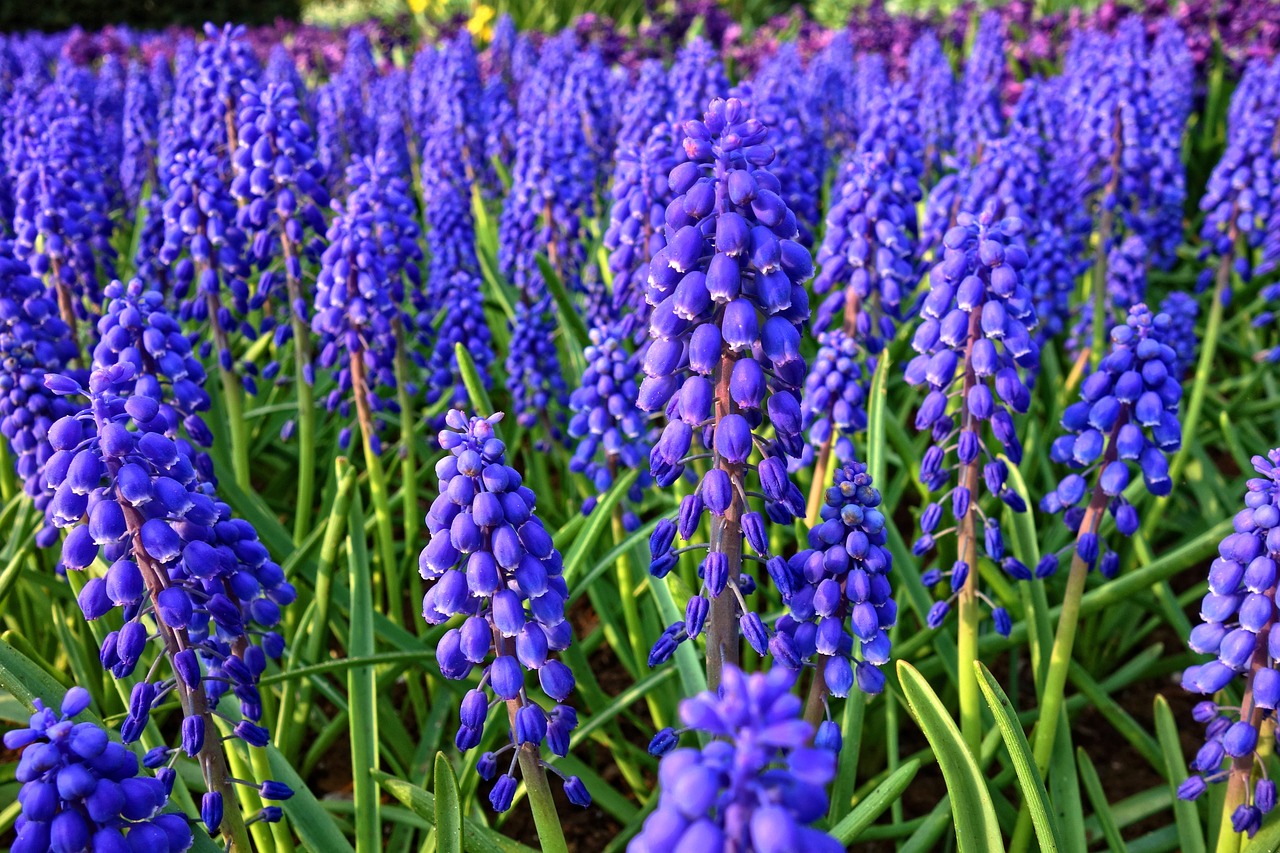
Muscari and Planting: A Blooming Guide
Introduction
In the colorful world of gardening, Muscari, often known as Grape Hyacinths, stand out as charming spring-blooming bulbs. If you’re a gardening enthusiast, or even if you’re just starting to explore the wonders of gardening, Muscari can be a delightful addition to your landscape. In this comprehensive guide, we will delve into everything you need to know about Muscari and the art of planting them to make your garden burst with vibrant colors.
Muscari: A Closer Look
The Beauty of Grape Hyacinths
Muscari, commonly referred to as Grape Hyacinths, are cherished for their unique and captivating appearance. These small, bulbous plants produce clusters of tiny, bell-shaped flowers that bear a striking resemblance to grapes, hence their name. Muscari come in a range of enchanting colors, primarily blue, but also white and pink, adding a touch of elegance to any garden. Their compact size and charming appearance make them a favorite among gardeners looking to create eye-catching displays.
The Botanical Side
Muscari belongs to the Asparagaceae family and is native to various regions, including the Mediterranean and parts of Asia. They are well-suited for temperate climates and thrive in spring, making them a popular choice for early-season color in gardens.
The Art of Planting Muscari
Choosing the Perfect Location
Selecting the right spot for planting Muscari is crucial for their success. Here’s a closer look at what you should consider:
Full Sunlight: Muscari thrives when bathed in sunlight. Choosing a location that receives at least six hours of direct sunlight daily is essential. This ensures robust growth and a profusion of colorful blooms in the spring.
Soil Quality: Muscari prefer well-draining soil to prevent waterlogged roots. Amending the soil with organic matter such as compost can improve drainage and provide essential nutrients for these charming plants.
Planting Muscari Bulbs: A Step-By-Step Guide
Planting Muscari bulbs is a straightforward process, provided you follow these steps:
Timing is Crucial
Plant your Muscari bulbs in the fall, usually about 6-8 weeks before the first frost. This timing allows them to establish strong roots before the harsh winter arrives.
Digging the Perfect Hole
For each bulb, dig a hole about 2-3 inches deep. Space the bulbs 2-3 inches apart to provide them with ample room to grow and spread.
Proper Positioning
When placing the bulbs in the hole, ensure that the pointed end faces upwards. This orientation is critical for proper growth and the development of healthy plants.
Cover and Water
After positioning the bulbs, cover them with soil and water thoroughly. This initial watering not only settles the soil but also provides the necessary moisture for the bulbs to initiate their growth.
Caring for Muscari
While Muscari are relatively low-maintenance, a bit of care goes a long way in ensuring they flourish in your garden:
Adequate Watering
During the growing season, maintain consistent moisture for your Muscari. However, avoid overwatering, which can lead to bulb rot. Water deeply when the soil is dry to the touch.
Fertilization
In early spring, apply a balanced, all-purpose fertilizer to encourage healthy growth and a profusion of stunning blooms. This additional nourishment ensures that your Muscari remain vibrant and captivating throughout the season.
The World of Muscari Varieties
Muscari enthusiasts can explore a diverse range of captivating varieties, each with its unique charm:
Muscari armeniacum (Common Grape Hyacinth)
The classic and popular choice, Muscari armeniacum, boasts striking blue blossoms that are synonymous with this charming plant. It’s an ideal variety for beginners and experienced gardeners alike.
Muscari latifolium (Broadleaf Grape Hyacinth)
This unique variety features two-toned flowers, adding an exciting element to your garden. The contrasting colors make it a captivating addition to any landscape.
Muscari botryoides ‘Album’ (White Grape Hyacinth)
For those seeking a more delicate and pristine look, ‘Album’ variety offers stunning white blooms. These white Grape Hyacinths bring an air of elegance to your garden, creating a beautiful contrast to the more common blue varieties.
Conclusion: A Burst of Spring Elegance
Incorporating Muscari into your garden is a delightful way to add a burst of color and elegance to your outdoor space. These charming spring bloomers are relatively easy to plant and maintain, making them an excellent choice for gardeners of all levels. With the right care and attention, your Muscari will flourish, and your garden will be transformed into a sea of enchanting spring blossoms.
Frequently Asked Questions (FAQs)
1. Are Muscari bulbs suitable for container gardening?
Yes, Muscari bulbs are a great choice for container gardening, provided they have well-draining soil and receive adequate sunlight. They can be potted in containers to create vibrant, portable displays.
2. Can I plant Muscari alongside other spring bulbs like tulips and daffodils?
Absolutely! Muscari pairs beautifully with other spring-blooming bulbs such as tulips and daffodils, creating a stunning tapestry of colors and shapes in your garden.
3. How do I prevent pests and diseases from affecting my Muscari?
To prevent common pests and diseases, maintain proper soil drainage and good air circulation around the plants. This will help deter issues like bulb rot and pests such as aphids.
4. Do Muscari require winter protection?
Muscari are generally hardy and do not require winter protection. However, in extremely cold regions, applying a layer of mulch can provide added insulation to protect the bulbs from harsh winter conditions.
5. Can I cut Muscari flowers for indoor arrangements?
Yes, Muscari blooms make charming cut flowers for indoor arrangements. Cutting the flowers will not harm the plants, provided you leave some foliage behind to nourish the bulbs for the following season.